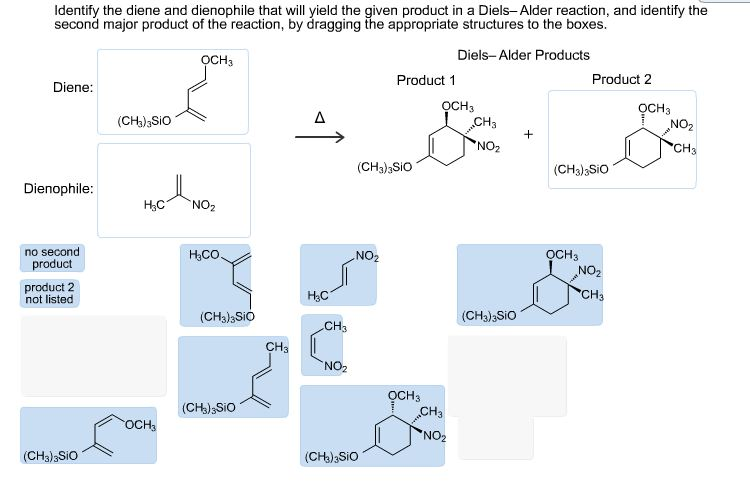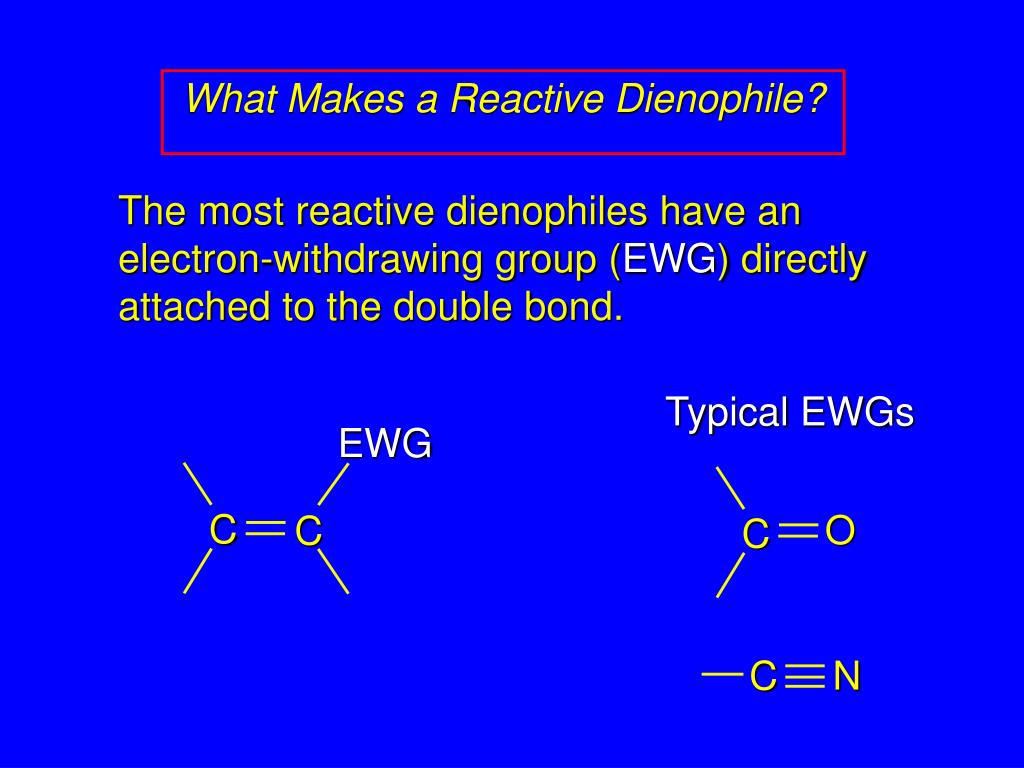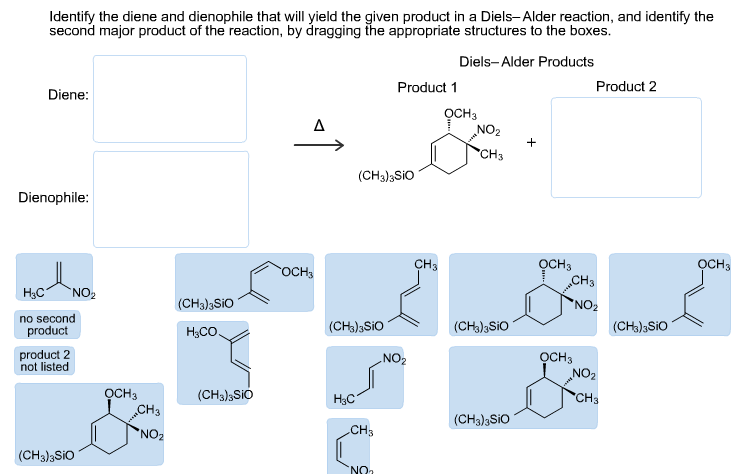
However, success of the pretargeting strategy is directly dependent on the chemical reaction that allows efficient and selective binding of the radiolabeled small molecule to the biovector. The main key factor of the pretargeting approach is the rapid pharmacokinetics of the radiolabeled small molecule to favor high radioactivity accumulation at the tumor sites while avoiding radiocytotoxic effects on healthy organs. Illustration of the four basic steps of the pretargeting approach. developed a glycodendrimer-based clearing agent for pretargeting studies. Recently, Myrhammar and coworkers proposed a lactosaminated peptide nucleic acid-antibody conjugate as a potential clearing agent, whereas Cheal et al.
#REACTIVITY OF DIENOPHILES FREE#
Several studies demonstrated that the clearing agent does not interact with the biovector already bound at the surface of the cancer cells but only with free molecules present in the blood circulation, as illustrated by SPECT/CT imaging studies. The biovector is then transported to the liver or the spleen where it can be metabolized and eliminated from the body. A clearing agent can also be employed at the end of the second step to remove the excess of biovector from the blood stream. Finally, the last step is based on the rapid binding of the radiolabeled small molecule to the biovector at the tumor site and its rapid clearance from the blood.

The third step is the injection of the radiolabeled small molecule. The second step is the slow accumulation of the biovector at the tumor site and its clearance from the body. The first step consists of the administration of an unlabeled and modified biovector (i.e., monoclonal antibody) possessing the ability to bind an antigen or receptor and a radiolabeled small molecule. It relies on four main steps ( Figure 1). The pretargeting concept was developed to overcome the limitations encountered during direct targeting of tumors with radiolabeled antibodies. Many pretargeting strategies have been described in the literature, but methods based on biotin and avidin and bispecific monoclonal antibodies (mAbs) are the most common. Pretargeting was introduced in the 1980s by Dayton D. Basic Principle of the Pretargeting Approach Thus, many investigations on antibody fragments, active removal of labeled antibodies from the blood and pretargeting have been recently carried out to reduce radiotoxicity associated with radiolabeled antibodies. However, the long circulation of radiolabeled antibodies in the blood stream is a major challenge since it directly leads to unnecessary radiation exposure to healthy tissues such as the radiosensitive bone marrow. The biological half-life of antibodies is typically expressed in days and, therefore, long-lived radionuclides such as indium-111 ( t 1⁄2 = 2.8 days), zirconium-89 ( t 1⁄2 = 3.3 days) and iodine-124 ( t 1⁄2 = 4.2 days), are required to warrant optimal accumulation of the radionuclide at the target site. Then, various radiometals were conjugated to the antibody via chelators. Antibodies were first labeled by covalent incorporation of radioiodine to the tyrosine residues of the antibody. They are attractive biovectors due to their ability to target specific antigens expressed at the surface of tumor cells.

Radiolabeled antibodies have been used over the last decades in radioimmunodiagnosis (RID) and radioimmunotherapy (RIT) to image and treat tumors.

Therefore, extensive research has been carried out to optimize both click reagents and to employ the IEDDA bioorthogonal reaction in biomedical applications. Unfortunately, the cis-conformer is significantly less reactive toward tetrazine than the trans-conformation. Furthermore, TCO is photosensitive and can be isomerized to its cis-conformation via a radical catalyzed reaction. It was found that both reagents are sensitive to acidic or basic conditions. The use of a trans-cyclooctene (TCO) and a tetrazine (Tz) in the reaction encouraged researchers to study them deeply. Its biocompatibility and ideal kinetics are very appealing for pretargeting applications. The IEDDA is the fastest bioorthogonal reaction known so far. However, due to their incomplete biocompatibility and slow kinetics, the inverse-electron demand Diels-Alder (IEDDA) reaction was advanced in 2008 by Blackman et al. The Staudinger ligation, the copper catalyzed azide-alkyne cycloaddition (CuAAC) and the strain-promoted azide–alkyne cycloaddition (SPAAC) were the first bioorthogonal reactions introduced in the literature. This strategy is directly dependent on chemical reactions, namely bioorthogonal reactions, which have been developed for their ability to occur under physiological conditions. The pretargeting strategy has recently emerged in order to overcome the limitations of direct targeting, mainly in the field of radioimmunotherapy (RIT).


 0 kommentar(er)
0 kommentar(er)
